I would have loved Persona 3 Reload when I was 14. Around there, I’d say I was most in love with the series, and Persona 3 stood at the top. I’d go as far as saying that with the first NieR and Metal Gear Solid 3, Persona helped shape what I thought stories in games could be.
It’s no longer 2013, and more stories have come along that further shaped my tastes. I’ve admittedly fallen out of love with Atlus due to being relatively disappointed by more recent releases. 13 Sentinels: Aegis Rim might rank among my favorite games ever, but it only published that title with Vanillaware developing. While I regard some of Atlus’ RPGs among my favorites, revisiting Persona 3 came with a worry I didn’t feel with any other remake I’ve played.
When seeing Persona 3 Reload‘s inclusions, it made me worry that it’d just be a cleaner release with a few of my issues from prior versions resolved. Now that I’ve finally played it, my prevailing thought is that I’m playing the best release of Persona 3‘s worst version. There are genuine improvements here, but there’s always this feeling that something’s missing, stopping it from feeling close to its definitive version.
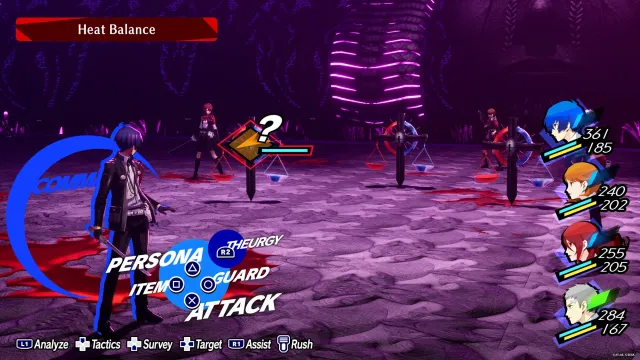
Persona 3 Reload (PlayStation 5 [reviewed], Xbox Series X|S, Steam)
Developer: Atlus
Publisher: Sega
Released: February 2, 2024
MSRP: $69.99
The never-ending climb
Something I can genuinely praise Persona 3 Reload for is how fun combat is. It took its successors’ improvements and built upon them even more. This means that while it lacks some elements introduced in Persona 5, Reload recontextualizes others in a meaningful way.
Baton Pass is now Shift and functionally remains the same, but is as slick as ever to use. Nothing’s more satisfying than striking an enemy’s weakness and then using Shift to attack with another party member who has another foe’s weakness.
Showtime also returns as Theurgy and is significantly better here. Instead of activating somewhat randomly, each character has a Theurgy gauge that fills when accomplishing specific actions that relate to that character’s personality. One character might have theirs filled from aiding party members, while another might need to strike weaknesses.
Another improvement I’ve seen is how boss encounters are handled. I revisited Persona 3 Portable at a point where my playthrough overlapped with the one in Reload. I ended up fighting the same boss in both versions, getting a direct look at how the versions compare. While I cheesed the boss in Portable due to its surprising lack of resistances and having an overpowered persona, the same boss in Reload had some tension. There were more resistances to account for, and I had to reinvent my strategy! It was honestly a moment Reload shined for me even if it was an incidental moment.
It’s not as easy to farm stat-boosting cards in Reload, and fights that needed updating got just that. Balancing combat is a specific area it really seems the developers made significant efforts to improve upon the original.
The biggest improvement for me in Persona 3 Reload‘s combat is having the Kouha and Eiha spells from Persona 5. It’s small, but it makes the light and dark elements consistently useful, and I love them.
I would say Reload is an overall easier time than FES and about the same as Portable. This comes down to having the direct party control lacking in the original Persona 3 and FES while remaining a more balanced experience than Portable.
What I’m less in love with is how other parts of Reload handle its source material. It doesn’t introduce new issues, but some old ones persist.
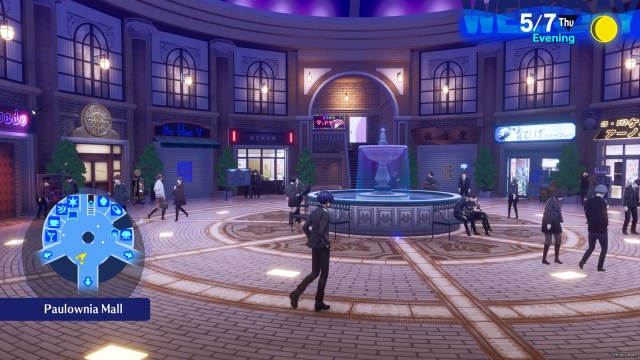
Too much time on my hands
Exploration and free time in Persona 3 Reload remain fundamentally unchanged from the previous versions. It’s around here where I find the remake lacking some of its potential.
Compared to Persona 5‘s Tokyo or Persona 4‘s Inaba, Tatsumi Port Island doesn’t have much to do. Reload improves it by expanding the activities, but only in the dorm.
These new dorm activities are nice and give extra opportunities for players to hang out with party members. They range from cooking and gardening to watching TV and reading and offer anything from boosting social stats to gaining new items, which are small but nice rewards.
If done enough times with specific party members, they even offer a new passive buff corresponding to the character. Yukari, for instance, will have healing spells that cost less MP while Aigis’ physical abilities strengthen.
There’s also a communal computer, but it’s almost a non-factor since programs and online links unlock at a snail’s pace. I like the potential for something like this returning in a future entry with more of a focus on unlocking new items in stores and combat maneuvers.
Players also have access to the Iwatodi Strip Mall at night, giving more opportunities to boost social stats. This is with previously available activities such as working in Changall Cafe and hanging out with specific characters.
While having nighttime activities is helpful, it makes it easier to max out all social stats relatively early. It’s an ironic drawback that giving more options makes most of them redundant sooner, but it’s an inclusion I still appreciate.
Where my issues with exploration start arising is with how Tartarus was handled. In Reload and the previous releases, this massive tower works as a mega-dungeon that players spend the entire game working through.
An issue that persisted throughout every Persona 3 version is that Tartarus just plain sucked. Each block present didn’t have an individual theme so much as they offered different colored randomized corridors to trudge through.
Reload gives the blocks their own theme, but this upgrades them to be slightly better than Persona 4‘s themed corridors since rooms here sometimes have more shapes. Coming from Thebel to Arqa is a cool experience at first as the latter carries this strange bio-mechanical atmosphere. Once the illusion fades, however, dungeon-crawling in Persona 3 Reload returns to being something to rush through.
It makes it perfect to play with a podcast in the background, but that’s not a great compliment. The Monad Doors are a fun inclusion that breaks up pacing with challenging fights, but Tartarus’ structure is still dated.
Persona 5 also saw a randomized dungeon return with Mementos, but that felt less repetitive due to spending most time in hand-crafted dungeons. Even Shin Megami Tensei V, which also lacks many unique dungeons, had some that broke up general exploration.
I will credit the actual art design because the blocks all look incredible. I mentioned Arqa’s pulsing bio-mechanical design, but Thebel’s corridors received a substantial facelift. The last I’ll mention is Yabbashah’s mix of futuristic elegance and industrial pipes.
Persona‘s main appeal isn’t with the dungeon-crawling, however. What I was most interested in seeing was how Atlus’ first attempt at a social-sim hybrid is translated into a remake made almost 20 years later.
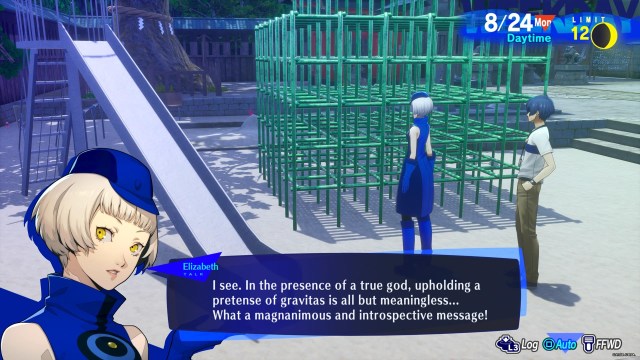
It’s Persona 3, for better and worse
One of the most disheartening feelings is returning to a game you loved and realizing you don’t like it as much anymore. This is overall how I felt playing Persona 3 Reload, and it doesn’t feel good.
Much of this comes down to the story being faithful to its source material to a fault. This applies to the core plot and Social Links, and while Reload shares its predecessors’ highs, it shares their lows, and the new content feels like a bandage over a larger wound.
To get it out of the way, the new scenes are great! I love having more time with Strega even if not much more is learned about the group, and the dorm activities with party members are full scenes that take advantage of the talented new cast. The Linked Episodes with male party members also somewhat make up for their missing Social Links. I would have rather have had those, but I still particularly enjoyed Akihiko and Shinjiro’s new scenes.
These still don’t fix most issues I already had with Persona 3‘s story. As strong as someone like Junpei’s character arc is, was it necessary to still have him be a creep in the first couple dozen hours? He works well as a goofball character, but any potentially early endearment tanks when he considers looking up Yukari’s skirt.
Other scenes that occur later also lack the impact they could have had if there was more build-up. There is one that does just that due to the new content, and it would have been great to see that care applied everywhere.
My biggest issue with Persona 3 Reload‘s narrative comes from its Social Links. The original Persona 3 was Atlus’ first attempt at a system like it, and it shows. While several hold up wonderfully, the ones that suck still really suck. It’s an issue punctuated by Reload remaking the base game and not including most content from Persona 3‘s rereleases.
While the Justice Social Link for Persona 3‘s male protagonist is far better and way less problematic than the female protagonist’s, the others exclusive to her were overall far stronger. I figured her exclusion would have been felt in Reload, but I didn’t realize how bad it was. Kazushi’s, for instance, is fine as a Chariot Social Link. He’s just not as interesting as Akihiko. Meanwhile, Maya’s story as the Hermit is off-putting, while Saori Hasegawa’s is incredibly touching.
Revisiting Persona 3 Portable while playing Reload widens this disparity. This ground-up remake provided Atlus with a perfect opportunity to strengthen both Persona 3‘s core story and Social Links. As flawed as the former is, the extra activities and scenes help round out its cast. The latter doesn’t get that, and it makes this remake come off as a missed opportunity to make up for everything it excludes.
There’s also the closing hours, which I always found to be Persona 3‘s best, and they’re better here. The mix of new scenes with the original’s excellent ones mesh together the best here, and it reminded me why I considered Persona 3 my favorite in the franchise. I just only wish that reminder came before I dumped 50 hours into this remake.
Persona 3 Reload is a good game. Its gameplay changes help make it accessible to a newer audience. The combat’s genuinely a blast and helps dungeon-crawling be less of a slog. It just comes with the baggage of leaving behind incredible inclusions and not updating certain areas that needed it most or not going far enough with updates.
It’s odd to say, but I felt sad playing Reload. Not for anything occurring within it. Rather, it reminded me that I had fallen out of love with Atlus. If anything, it’s fitting that Persona 3 Reload helped me realize that. Much of it is about learning to move on, and I’m going to do just that.

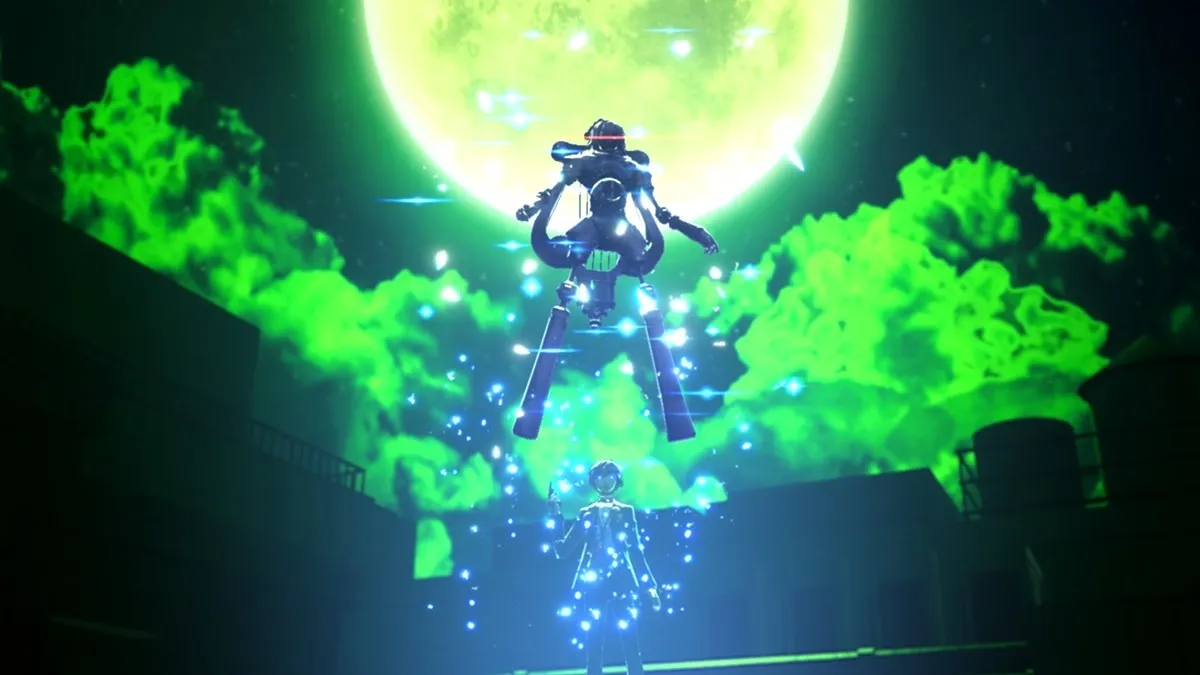


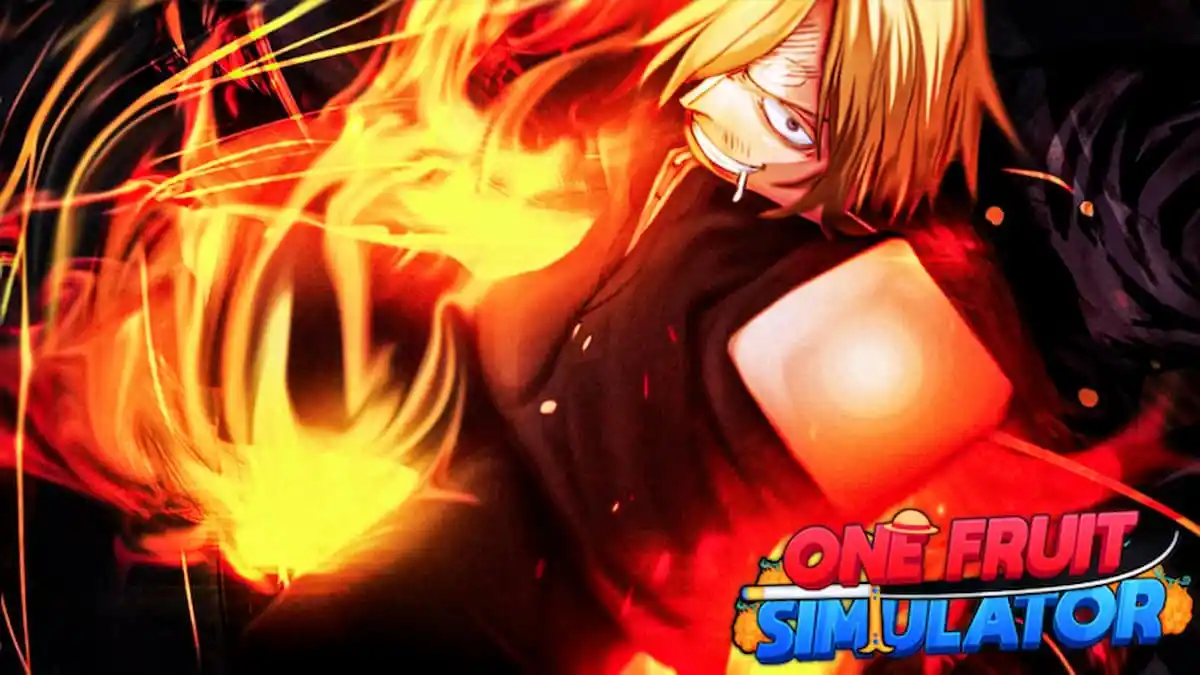
Published: Feb 4, 2024 09:31 am